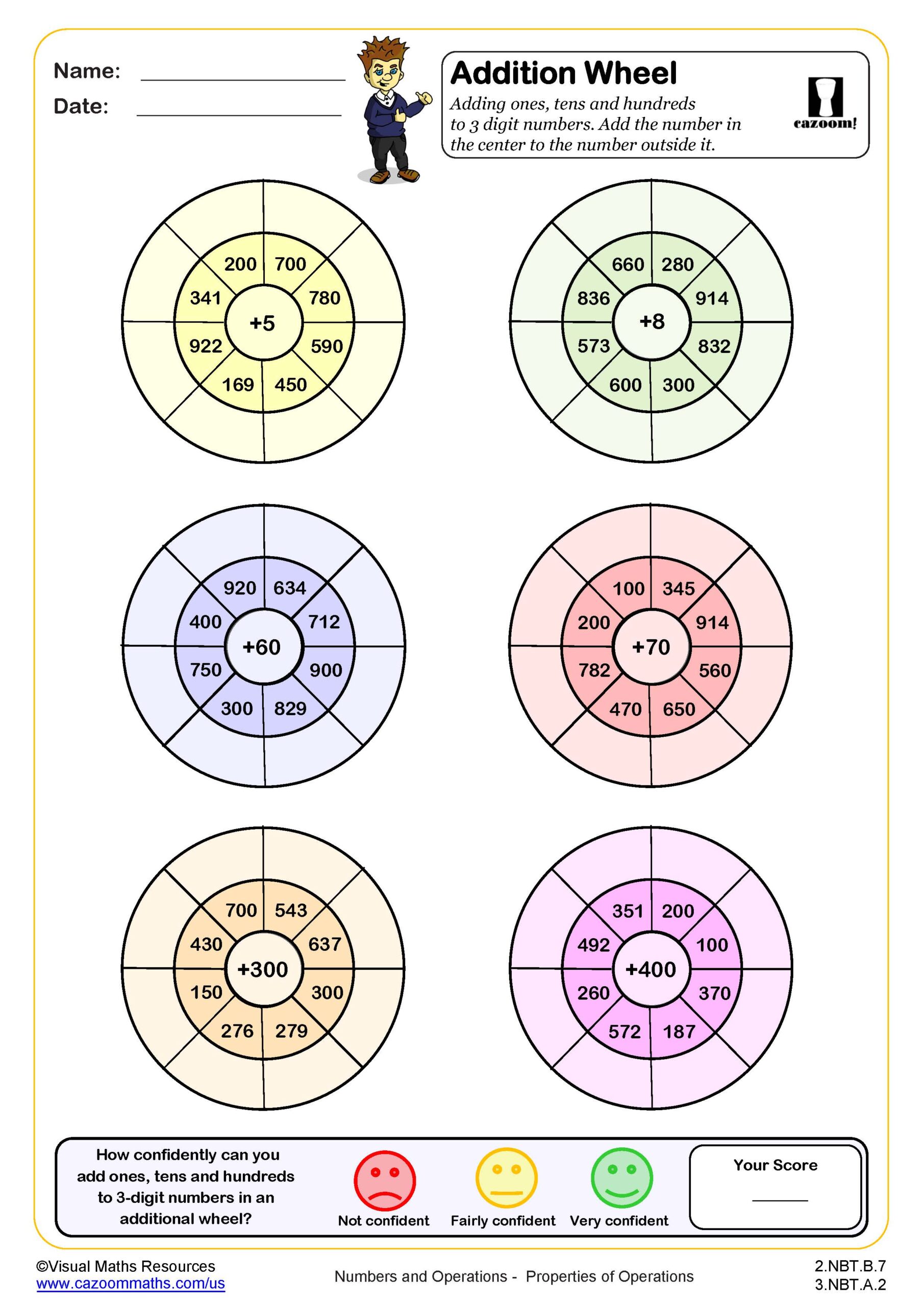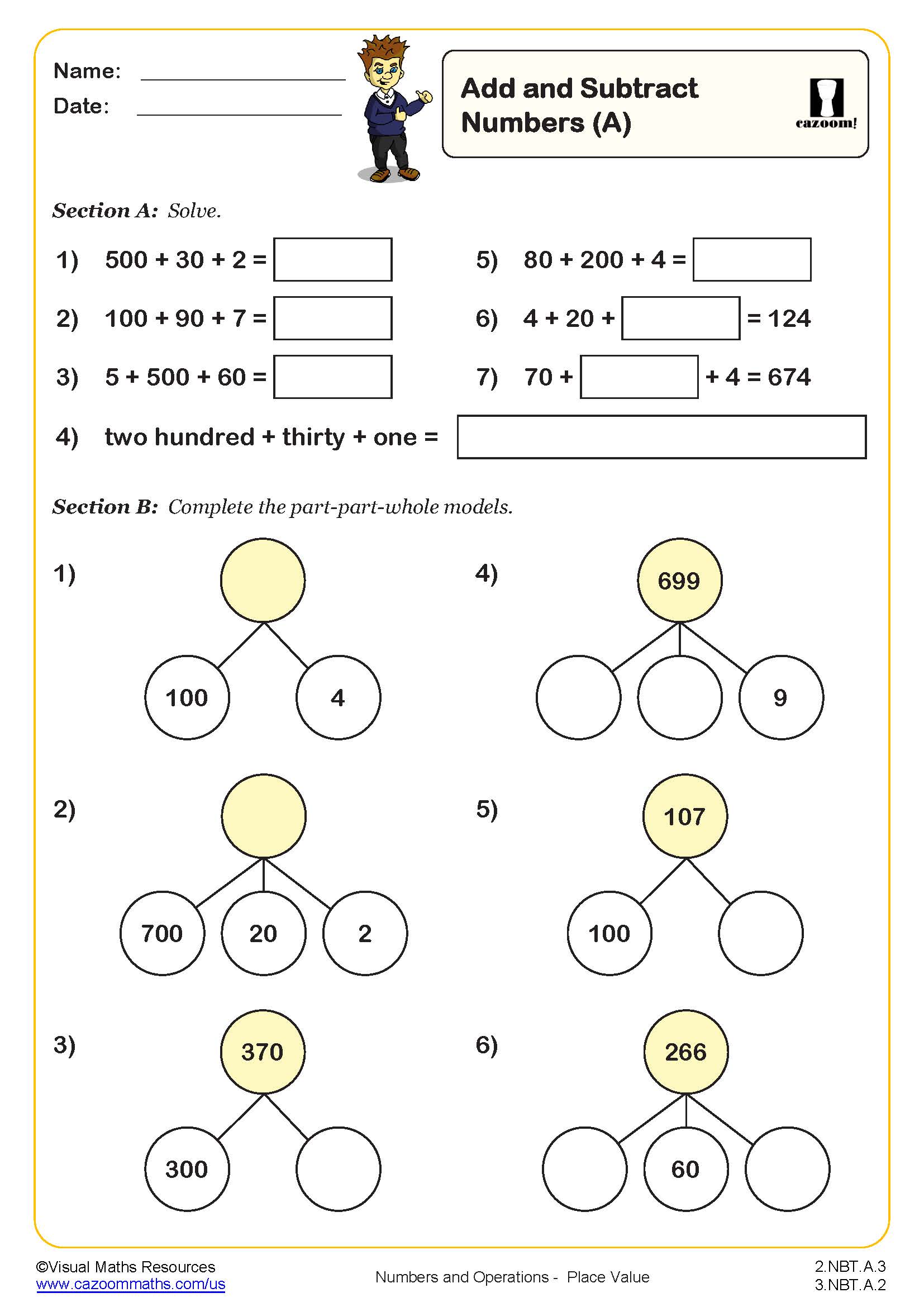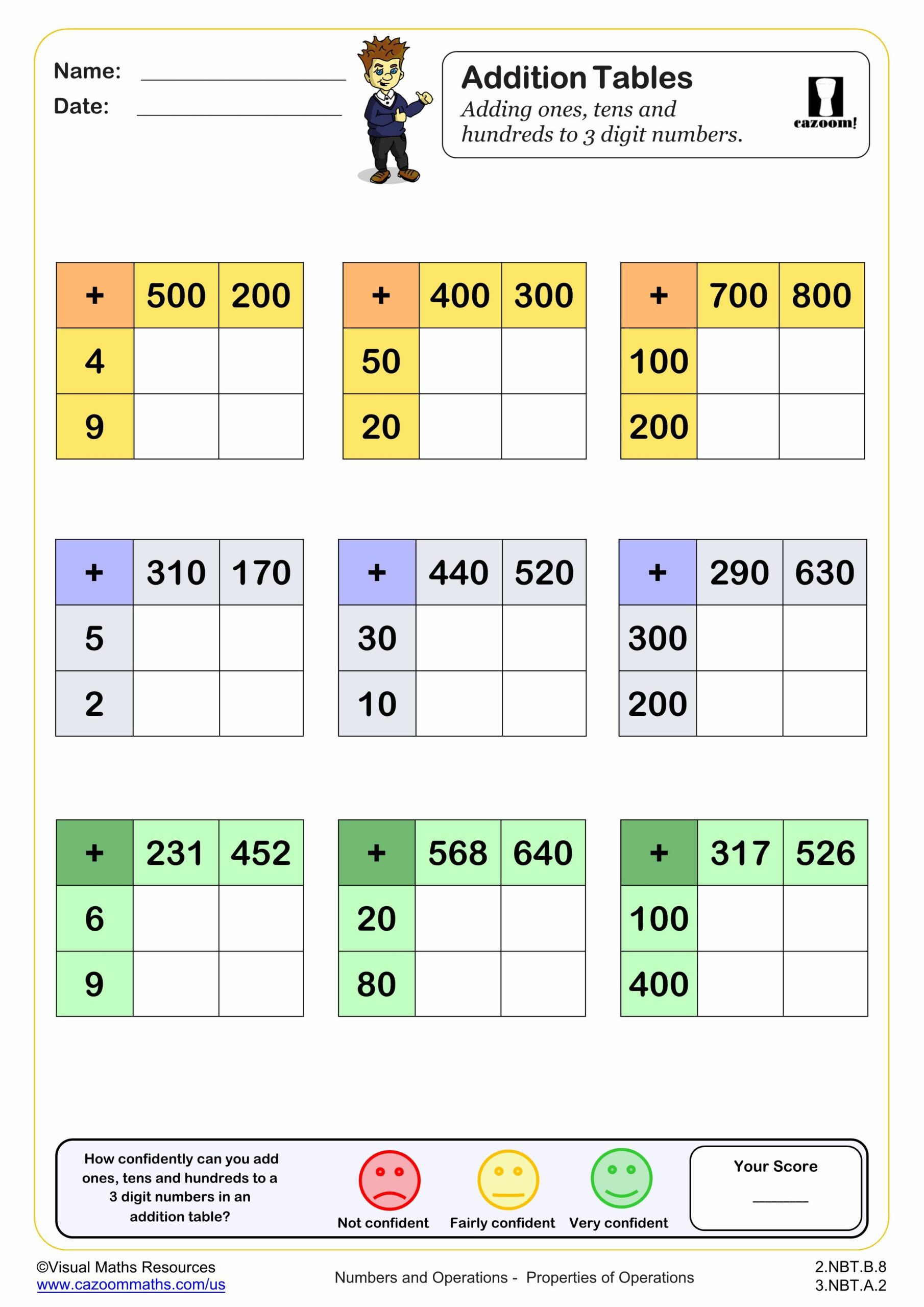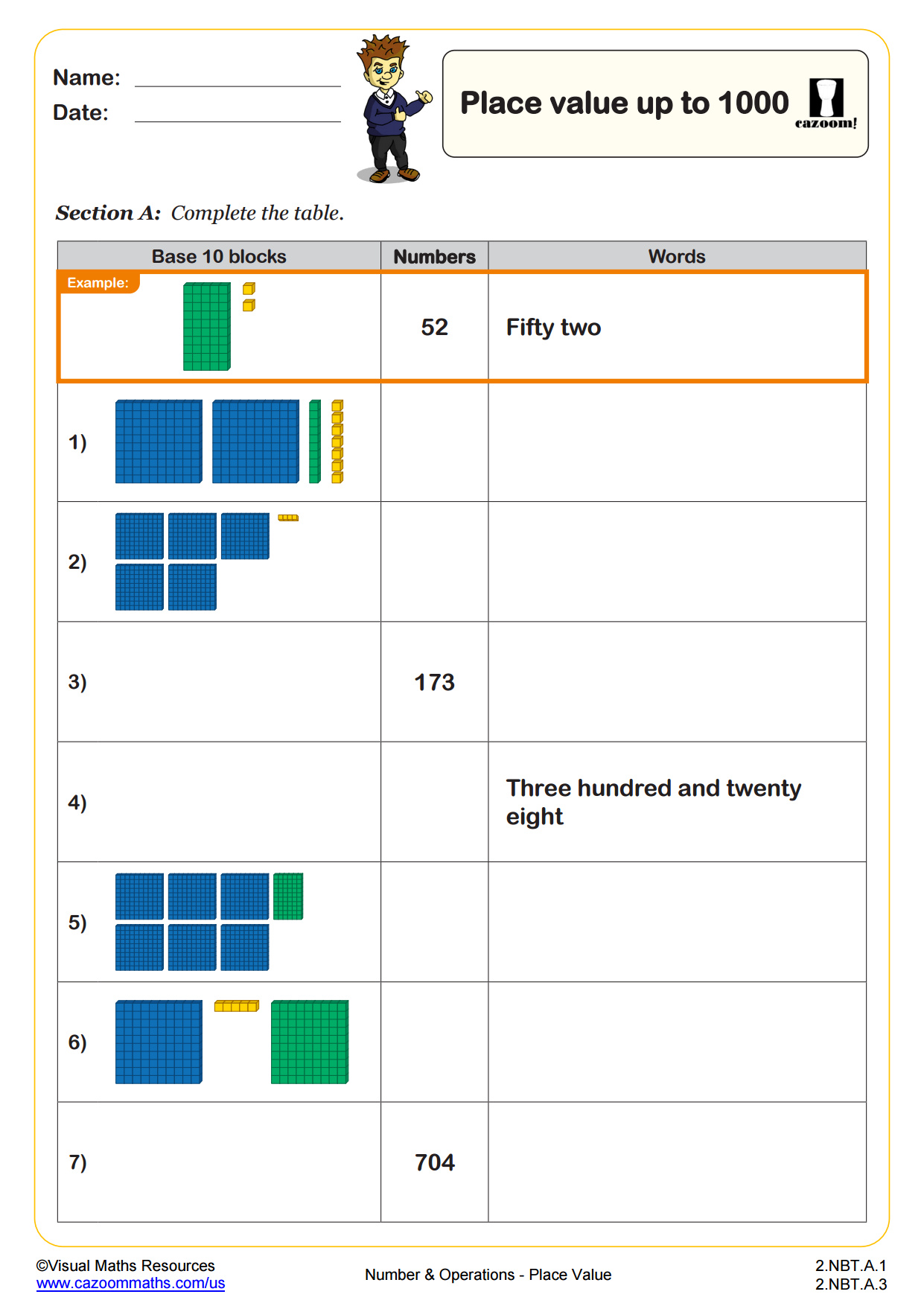Back to:
Expanding Numbers to 1,000 WORKSHEET
Suitable for Grades: 2nd Grade
CCSS: 2.NBT.A.1, 2.NBT.A.3
CCSS Description: Understand that the three digits of a three-digit number represent amounts of hundreds, tens, and ones; e.g., 706 equals 7 hundreds, 0 tens, and 6 ones. Understand the following as special cases: a. 100 can be thought of as a bundle of ten tens — called a “hundred.” b. The numbers 100, 200, 300, 400, 500, 600, 700, 800, 900 refer to one, two, three, four, five, six, seven, eight, or nine hundreds (and 0 tens and 0 ones).
Read and write numbers to 1000 using base-ten numerals, number names, and expanded form.
Read and write numbers to 1000 using base-ten numerals, number names, and expanded form.
Expanding Numbers to 1,000 WORKSHEET DESCRIPTION
Partitioning numbers plays an important role in students' ability to calculate mentally with numbers. With this worksheet, your pupils will practice fixed and flexible partitioning.
Part-part-whole models are used in section A where learners will partition numbers into hundreds, tens, and ones. Next, in section B, pupils will look at flexible partitioning as they consider different ways to partition two and three-digit numbers.
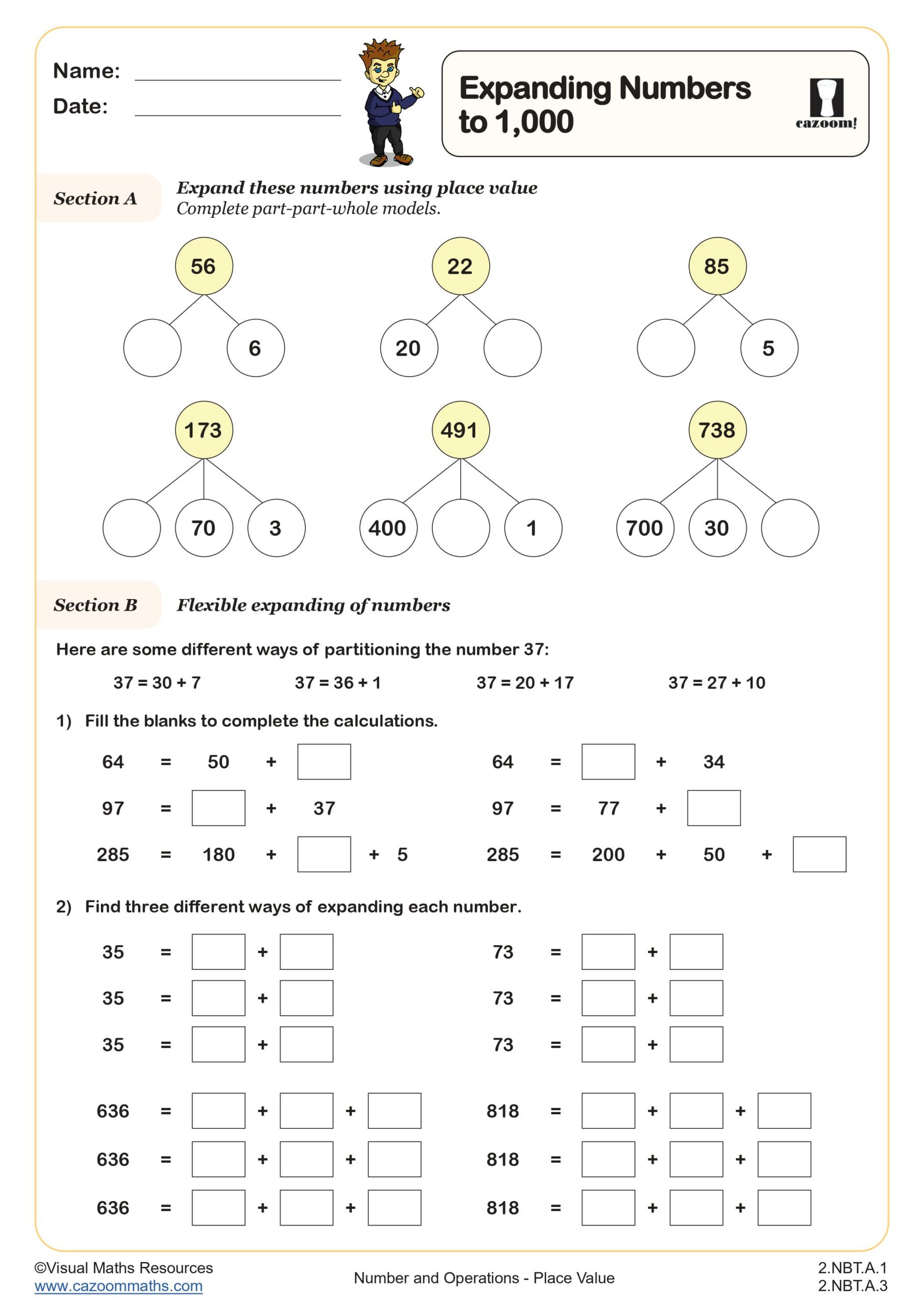
RELATED TO Expanding Numbers to 1,000 WORKSHEET
Frequently Asked Questions
This expanding numbers to 1,000 worksheet is designed for students in 2nd Grade and aligns with Common Core State Standards.
